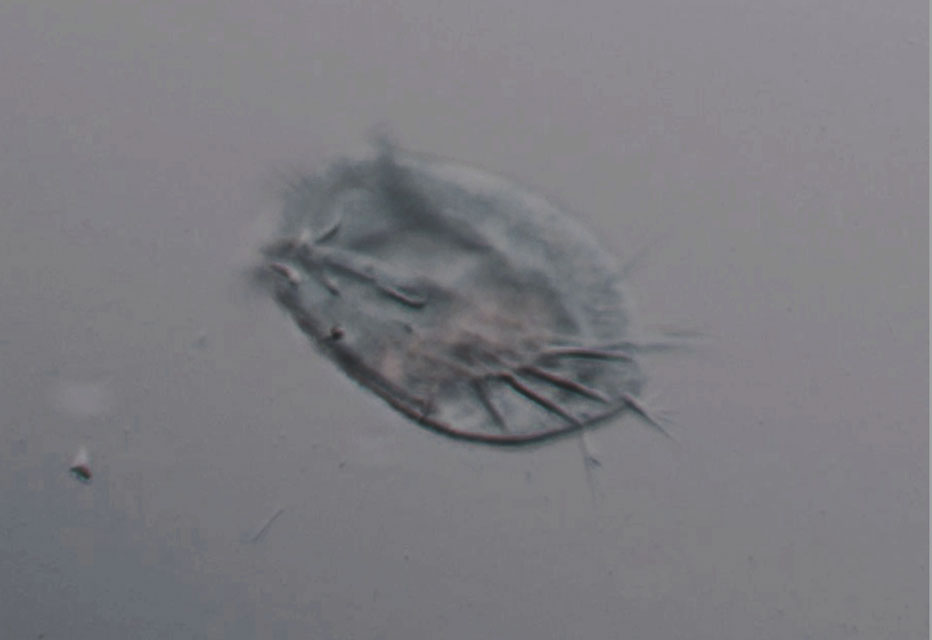There’s a new piece of research in Current Biology regarding the movement of a walking (yes, walking) single cell creature called Euplotes eurystomus which demonstrates pretty convincingly that the cell’s locomotion system is a relatively complex molecular finite-state machine.
Its 14 “legs” (cirri) are interconnected by a network of microtubules and the microtubules contract or expand based on chemical reactions around them, pulling on each other and on the cirri. In combination, this creates a walking gait just like our leg muscles pulling on our legs.
But our movement is both coordinated and directed by our nervous system which instructs our legs where to go, so one would expect the movement of a creature with no nervous system to be randomized.
Instead, what’s fascinating about the movement of this ciliate animal is that it is not random. In fact, the movement of many protozoans has been observed to be “consciously” directed enough over the years that a long time ago, scientists theorized they must have some kind of primitive nervous system inside them. There is, for example, a good amount of research on single cells moving in response to external stimuli.
But what’s different about this piece of work is that they demonstrated how the state-machine is actually built from molecules inside the cell, creating a physical machine that responds to the environment in a non-random way. This molecular state-machine creates “better than random” velocity and direction for the ciliate’s walk. It’s not particularly efficient, as one would expect from a machine that evolved and was not consciously designed, but it does work. External stimuli comes in, the machine responds to it, some reactions occur, the machine enters a new state, and so on. This single cell contains a highly complex system that is processing its environment.
What strikes me as potentially mind-blowing about this, is: what if all cells are state-machines? What if all of our cells are capable of “memory?” This is not a question of whether or not your liver cells respond one way if presented with one molecule and another way if presented with another. It is a question of whether or not the cell itself remembers that it already reacted to, say, 10 of one molecule and 11 of another.
We currently think of our bodies as simple machines that a computer (our brains) “pilot.” But what if our entire body right down the cellular level is, also, a computer – or a conglomeration of 30 TRILLION computers “piloted” by 100 TRILLION connections in your brain? (Yes, a finite state-machine is not a computer, but it’s not not a computer).
This would make our holistic functioning as an organism exponentially more complex than we currently understand it to be and have staggering implications for how we treat our bodies. It also creates a new perspective for various spiritual theories that view the physical body more holistically or the concept that we could ever “upload” ourselves by simply copying the state of our brains. If “ourselves” is the entirety of our physical form and not just our nervous system, that’s also an exponentially more complex system to copy – not to mention manage on a daily basis!
Picture Credit: Larson, B. T., Garbus, J., Pollack, J. B., & Marshall, W. F. (2022). A unicellular walker controlled by a microtubule-based finite state machine. Biophysical Journal, 121(3), 117a.
